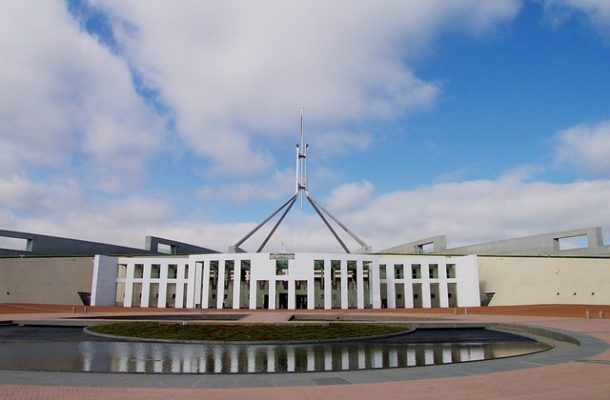Do we have to let a crisis develop before we do anything?

“You never let a serious crisis go to waste” said Chicago Mayor Rahm Emanuel. A crisis provides “an opportunity to do things you think you could not do before” he explained.
As enthusiastic politicians and students of politics know, in a democracy even the most clearly-needed reform can be stubbornly difficult – a carbon price in Australia, gun control in the USA, pension reform in Greece. Vested interests who have learned to benefit from the status quo, talkback radio hosts who thrive on raising anxiety, and opposition politicians all conspire to thwart change. That is, until a crisis erupts, when these constraints can be ignored.
For example Kevin Rudd will be remembered both as the politician who prevaricated on climate change and a mining tax, and as the politician who took immediate and decisive action in response to the Global Financial Crisis. The GFC was entirely predictable – even if it was hard to predict when it would be manifest. Looking back on its antecedents the indicators were obvious – high real-estate and equity valuations, financial institutions’ highly leveraged balance sheets, and the momentum of positive feedback driving prices of “derivative” products. All were in plain view to those who cared to look.
Those economists who were detached from the exuberance of the financial markets, including Australia’s own Steve Keen, saw it coming and tried to warn the world, but no one wanted to listen to them. Early action would have been painful, but far less painful than the events of September 2008 and their long tail of disruption and misery. We may have learned from the GFC – our financial sector is now better-regulated – but there are other indicators that should now be commanding policy attention.
We seem to have become blasé about high household debt and the fragility of household balance sheets, particularly when the assets on those balance sheets are highly-priced housing. Similarly we are complacent about our chronic deficit on current account (our balance with the rest of the world) even though our national debt-to-GDP ratio is one of the highest for any “developed” country.
Low wage growth is commanding some attention, but only because it is throwing the Commonwealth’s fiscal projections out of whack. (Without at least nominal income increases, the government won’t reach its revenue targets.)
Income and wealth inequality, which have been rising for almost 40 years, are commanding attention, but that attention is largely in the frame of a “left”/“right” conflict, rather than as a threat to the legitimacy of our economic and political arrangements.
Action on climate change may have been spurred on by the crises in South Australia, but it too is being pushed aside as a “left”/“right” conflict. Classification of a problem as an issue in partisan politics is a sure way of stymying progress towards a productive solution.
One of the most significant trends we are overlooking is growing disillusionment with our political institutions. This is manifest not only in a long-term decline in trust in government, but also in an even longer-term fall in support for our two major parties, which has been trending downward for seventy years. The combined Labor plus Coalition vote in the 1951 election was 98 per cent; in last year’s election it was 77 per cent and the latest opinion polls put it at around 70 per cent. We are probably in a transition away from a British and American two-party system, towards a mainland European multi-party system – a consequence of the increasing irrelevance of the class-identity basis of our once-dominant parties.
Although our constitution is flexible enough to accommodate such a transition, our governance and institutional arrangements are carrying on as if nothing has happened – as if a “hung parliament” and the need for executive government to negotiate with the “crossbench” are some temporary anomalies. So long as we fail to recognize this trend, political parties will try to build coalitions not around the centre, as has happened most notably in Germany, but around the fringes, giving undue influence to particular interests and groups with esoteric demands. A consequence is polarisation of party policies, leading to abrupt policy swingss when the government changes.
There is a huge investment in the institutions with a stake in the two-party system – the parties themselves, the unions and “business lobbies” with their partisan connections, a public service that has learned to live with executive government but not with parliament, and a media that finds it easy to frame issues in terms of partisan conflict.
While our political institutions carry the legacy of a nineteenth-century model of capitalism, so do other social institutions, shaped by the thinking of an era, long past, when labour was plentiful and unskilled, when the word “capital” referred to big and expensive machinery, and when there were supposedly clear divisions between “employers” and “employees”.
Just as industrial capitalism displaced feudalism and other pre-capitalist arrangements, so too are economic trends now rendering irrelevant much of what we take for granted. The most important forms of capital contributing to our prosperity are institutional capital, which is largely collectively-owned, and human capital which is inseparable from labour. At the same time the price of physical capital (buildings and machinery) is tumbling in relation to other prices. It was once the case that labour was an adjunct to machinery, but now in so many industries machinery, particularly machinery built around IT, is an adjunct to labour.
The “gig” economy is one manifestation of these trends, as is the rise of the “prosumer” – the individual or household who is both a producer and consumer, such as the household selling solar electricity to the grid. So much of what we are coming to value has no tangible physical presence – databases, recorded music, maps on our portable devices. Such products are not bound by scale diseconomies, freight costs or by traditional border controls designed to protect local industries.
Yet we continue to muddle through with institutions based on the supposed interests of “employers” and “employees”. We impute serious meaning to indicators such as GDP, which are becoming increasingly detached from our enjoyment or otherwise of life. We get excited by ABS statistics on investment in physical capital, while having little awareness of the state of our human and institutional capital. We teach students the economics of the competitive market where all firms are bound by scale diseconomies and rising marginal cost, and where all factors of production are scarce, rather than the economics of industries with low or zero marginal cost and of human behaviour in markets.
Policy makers should at least acknowledge these political and economic trends, and start to consider ways of reforming our social and political institutions before a crisis, or a series of crises, forces us to action, or rather reaction, because while a crisis may focus attention, it does not always have a good outcome.
Ian McAuley is a retired lecturer in public sector finance at the University of Canberra and a fellow of the Centre for Policy Development. He has been involved in many aspects of the work of Global Access Partners and its ‘Second Track’ Process.












